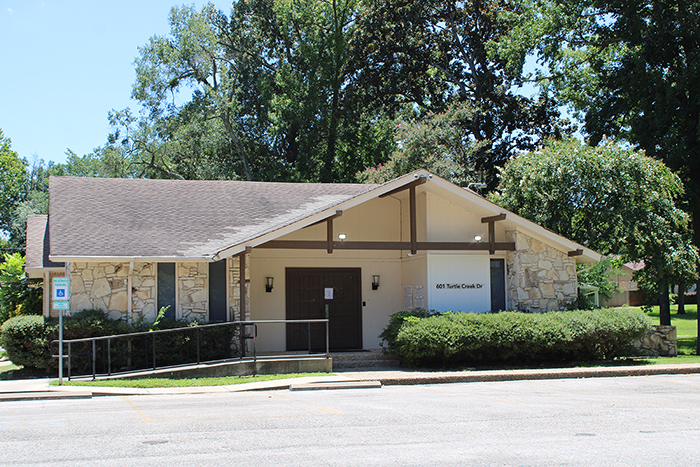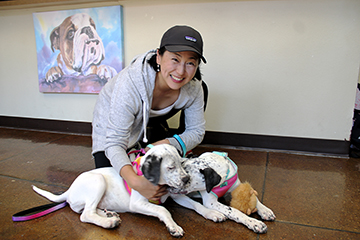Despite typical respiratory rates and low COVID rates, walking pneumonia on the rise in youth this fall
Published 5:35 am Tuesday, December 17, 2024

- Kathleen “KT” Helgesen
For the 2024 fall respiratory season, Northeast Texas has seen similar trends for RSV and the flu as past years and low COVID-19 rates. However, this season is abnormal due to the rising cases of walking pneumonia in younger children.
Doctors are seeing younger patients, particularly children ages 0 to 4, with walking pneumonia. This illness is caused by a bacteria called mycoplasma pneumoniae and is spread by respiratory droplets. Despite mycoplasma pneumoniae being a common bacteria, it is uncommon to see in younger patients.
Trending
“Typically (the bacteria) causes those symptoms in older children and young adults at much higher frequencies. Seeing those higher rates in this young population is something that is new over the last several months,” said Smith County Health Authority Valerie Smith.
Smith doesn’t know what is causing the spread but noted it is easier for younger kids to transmit illnesses.
“At those ages, they don’t practice hygiene the same way that adults and older children can,” Smith said.
Previously, people may have worn masks and kept their distance from others due to COVID-19. But now, people are around each other and no longer taking part in these mitigating efforts. This may be a contributing factor to the rise of pneumonia cases, said Kathleen “KT” Helgesen, Pediatric nurse practitioner at Bethesda Pediatrics.
“Nobody has a mask on. We kind of have this mentality of, ‘Who cares if I’m sick?’ or ‘I did an at-home COVID test and it was negative, so I can be around whoever’ instead of saying, ‘hey, there’s still other viral illnesses that we should be cautious about,’” Helgesen said.
Symptoms of walking pneumonia are fatigue, tiredness and exertion. A person who can normally walk upstairs may feel winded. Other symptoms include low-grade fever in younger kids, difficulty breathing, shortness of breath, vomiting and diarrhea, Smith said.
Trending
The incubation period for walking pneumonia is anywhere from one to four weeks. It may take some time before symptoms start presenting after someone gets sick. Once someone starts developing symptoms, they may be symptomatic and contagious.
“It can make people sick for very long but often their sickness is less severe than for people who have other types of bacterial pneumonia, so they may go longer before they seek medical care or before they’re accurately diagnosed,” Smith said.
Treatment for walking pneumonia can be challenging. This is because the antibiotics used to treat bacterial pneumonias common in children do not work on mycoplasmae pneumonia. Doctors have to figure out what bacteria is causing the pneumonia before properly treating it. They have to collect samples via mucus or phlegm, which can be difficult to get from younger children specially those who are intubated.
Due to the higher rates of walking pneumonia, Helgesen has started testing earlier and more frequently for walking pneumonia. On Dec. 4, she had a patient who had symptoms for three days and had developed a fever. After deciding to test the patient, she found they were positive for mycoplasma pneumoniae.
Historically, the positivity rate for walking pneumonia has been 10%. However, now it is at 75%, Helgesen said.
“It is very contagious,” Helgesen said. “In fact, it can spread up to 90% of household contacts. So it is important that we test and treat it more to stop the spread of it.”
Lack of data can be worrisome, according to Smith. Walking pneumonia is not a reportable disease in the state of Texas. Hospitals are not required to report cases when someone is diagnosed, makinh surveillance more difficult.
RSV, flu rates
In November, Region 4 — which includes Gregg, Smith, Wood and Harrison counties — saw the beginning of a gradual increase in RSV and flu, according Smith.
In Public Health Region 4/5 N, weekly emergency department visits for RSV and the flu increased about 2.5 times from Nov. 2 to Dec. 7. Emergency department visits for RSV were 837 on the week of Nov. 2 to 2,104 on the week of Dec. 7. For the flu, visits increased from 1,043 to 2,605 weekly emergency department visits, according to the Texas Respiratory Illness Interactive Dashboard provided by the Texas Department of State Health Services
“Thankfully, in our area, COVID cases still remain very low, so from a respiratory virus standpoint, this season so far looks pretty typical,” Smith said.
At East Texas Community Clinic — a federally qualified health center with locations in Gun Barrel City and Athens — staff is seeing a rise of respiratory illnesses including the flu. This is common for this time of year due to people spending more times indoors, according to Dr. Doug Curran, Chief Medical Officer at East Texas Community Clinic.
Clinics see fewer vaccinations
However, doctors and nurses have noticed less patients getting vaccinated this fall. They worry this will lead to higher respiratory rates later on.
“Vaccinations in general are under the microscope these days, and it’s very unfortunate because the vaccinations we have nowadays are probably the safest vaccinations we’ve ever had, and they make such an enormous difference in caring for patients,” Curran said.
Dr. Anita Scribner, Chief Medical Officer at Special Health Resources, said more people have been declining the flu vaccine at their clinics. In her work as a physician at Longview Regional Medical Center, she sees patients who become sick with bacterial super infections after having the flu.
“A week later, they can get bacteria that come and super infect the already compromised lung from the flu. So you get what we call bacterial super infection,” Scribner said.
Taking precautions
Health providers emphasize the importance of preventative measures including getting vaccinated. Getting vaccinated can help reduce the chance of infections of multiple illnesses at once and reduce the severity.
For those with underlying health conditions, preventing illness is important. Premature babies, those with undeveloped lungs, and heart problems are at-risk populations, Helgesen said. Children with lung problems, immune deficiencies and neuromuscular disorders along with asthma, cystic fibrosis and chronic lung issues are vulnerable for respiratory illnesses, according to Smith.
In addition, people who have chronic obstructive lung disease or are being treated for cancer are at risk of respiratory illnesses, Curran said.
In order to reduce the spread of viruses, health providers advise frequent handwashing and staying home when sick. If a sick person must go out, it is advised to wear a mask to reduce the spread of droplets.
“Children have significant respiratory illnesses, so we sure don’t want to give it to our kids and grandkids,” Curran said. “As a grandparent — I’m one of those, it’s one of my best jobs — I want to be sure I’m well immunized before I’m around grandkids.”






